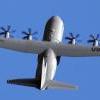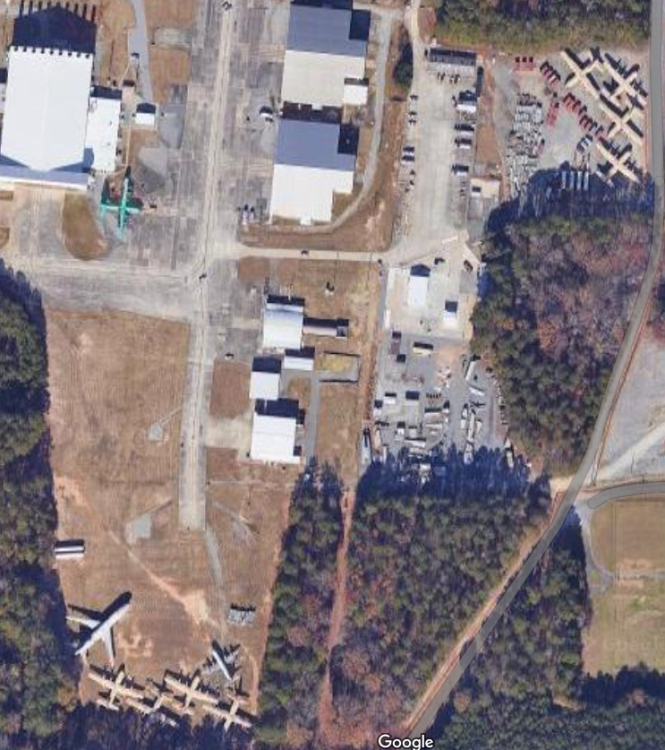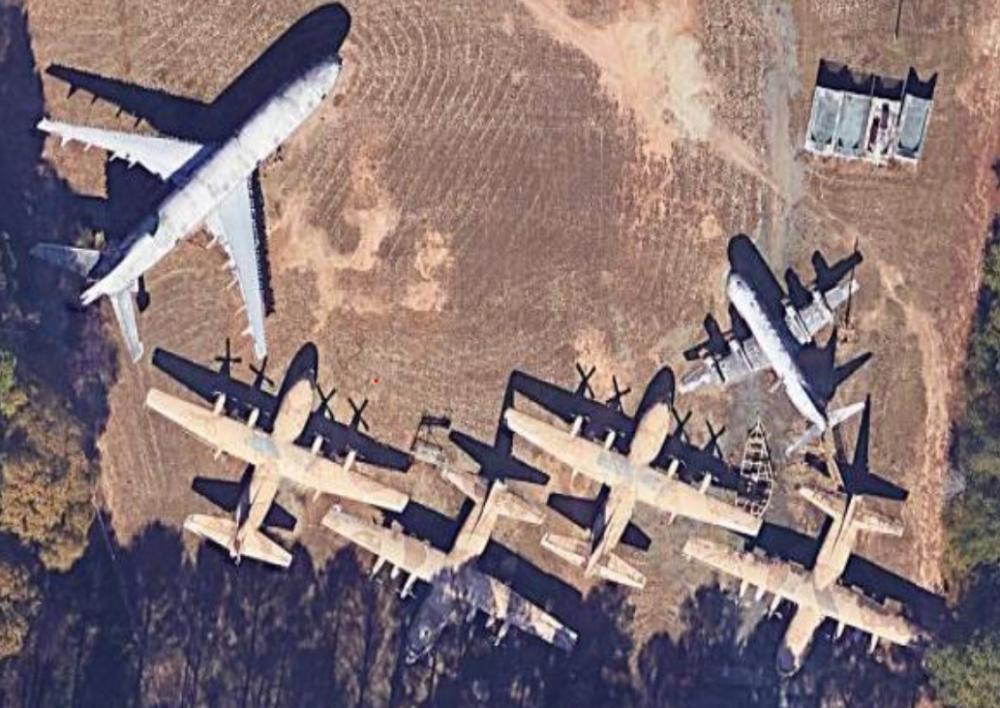-
Posts
124 -
Joined
-
Last visited
Content Type
Profiles
Forums
Gallery
Blogs
Downloads
Wiki
Everything posted by HerkPerfMan
-
WH, DHS, FBI, FAA, and DoD said this back in December too. https://www.defense.gov/News/Releases/Release/Article/4006538/dhs-fbi-faa-dod-joint-statement-on-ongoing-response-to-reported-drone-sightings/ https://www.reuters.com/world/us/no-evidence-new-jersey-drone-sightings-pose-security-threat-white-house-says-2024-12-12/
-
CAL FIRE C-130H Tanker 122 fighting crosswinds near the start of the Palisades fire. CAL FIRE acquired 7 C-130Hs from USCG with 1 operational so far. They are configured with the Coulson Aviation RADS drop system rather than that roll-on MAFFS used by C-130Js at 146 AW Channel Islands.
-
My sister-in-law and family lost their home in the first day of the Palisades fire along with the majority of their neighborhood. The pictures were wild: house reduced to rubble and car melted into a heap but trees and bushes still had green leaves. It sent me down a rabbit hole about wildfire behavior and prevention. This article sums up most everything about "defensible space" and what catches fire from embers - especially the test video. Now imagine that with 50+ mph winds https://theconversation.com/how-to-protect-your-home-from-wildfires-advice-from-fire-prevention-experts-on-creating-defensible-space-233847
-
To clarify, my ID4 has both traditional defrost (forced air) and electric defrost that can be operated together or separate. Electric defrost works way faster and heats every inch of the windshield without the massive power demand of the heater. It typically melts thick ice or slush snow enough in 5 minutes to wipe away with wipers. And I can sit in my warm car if it takes longer rather than scraping and cursing in the cold. Being "environmentally friendly" is low on the list of reasons to choose an EV. There are also many more American-made options besides Tesla to fit different usage requirements.
-
^This is spot on, from another actual EV owner. I have a 2023 VW ID4 Pro AWD and live in Illinois. It is quick, quiet, and comfortable - now I hate driving my wife's ICE car. I have over 20,000 miles with ZERO cost beyond electricity. I drive about 30 miles per day commuting and trucking kids, and take regular 200-300 mile trips. My tips for everyone who asks: Only consider an EV if you will do 90%+ of charging at home. Invest in a Level 2 charger. Do not think of public fast chargers as "gas stations" - avoid them since they are still severely lacking in availability, reliability, and speed. I have used a fast charger about 6 times in 20,000+ miles. Don't get the biggest battery available. 200-300 mile range is way more than enough for most people. You don't need to carry around that giant battery and kill your tires. Longer trips require more planning but there are lots of tools like PlugShare and ABRP. Efficiency drops with higher speed and colder weather. Cold is due mostly to the power demand of the cabin heater, so use heated seats and steering wheel if you need to maximize range. I have not seen an impact from hot weather. If you live in a colder climate, the car warms in a few minutes (no engine to warm up). The most underrated cold weather feature is the electric windshield - melts snow and ice in seconds without any scraping!
-
The process of making TOLD planning data (or any scheduled performance data) is an exercise in approximating and building safety margins. You gather field performance data, curve-fit it, model it, then compute scheduled performance for the -1-1. Trying to dial in to 1 knot is "polishing a turd" as they say. What matters is standardization - everyone should get the same output with the same inputs.
-
The larger lesson here is worth reiterating: Seeking information and listening to perspectives counter to your own experience are worthwhile and healthy no matter where you stand. And it helps sharpen your BS detector.
-
-

Bye bye demo teams (A-10, F-15E, F-16)
HerkPerfMan replied to BattleRattle's topic in General Discussion
USAF used to loan aircraft to Lockheed Martin crews to fly C-130J demos. I think Ramstein tails were used for Paris and/or Farnsborough air shows. -
The Royal Air Force has officially retired its C-130 fleet after 56 years of operation. The final C-130Js (Mk 4 and 5) were retired 30 June 2023. No 47 Squadron completed a farewell flypast over the entire country, including the Mach Loop. Interestingly, they could not return to RAF Brize Norton as planned...because the runway was melting from the extreme high temperatures. One of RAF C-130Js was sold to the US Navy and converted to the new Fat Albert for the Blue Angels. Best collection of photos and videos from the flypast here: https://www.thedrive.com/the-war-zone/britain-bids-farewell-to-c-130-hercules-with-spectacular-flypast
-
Yes it is. And don't forget the ATVs...
-
No video (yet) but still some badass visuals from Wyoming highways. https://www.dvidshub.net/image/7774225/afsoc-total-force-landed-mc-130j-mq-9-10s-mh-6s-wyoming-highways
-

Abort Speed Reaction Time Considerations
HerkPerfMan replied to HuggyU2's topic in General Discussion
Some perspective from flight test and performance engineering on the C-130J and C-5. Both include reaction time in the decision speed (VREF) and VCEF numbers, based on flight test. So a malfunction (typically assumed to be a critical engine failure) can occur up to VREF or VCEF. Other multi-engine aircraft handle this differently. However, flight test reaction times can be misleading since the pilot knows that a critical engine failure will occur during the takeoff run - just not when. Another key assumption in VREF is a 3-point ground attitude. If the aircraft is rotated, then the refusal distance is invalid since the time (and distance) to lower the nose is not included. Regarding C-130J Block 8 and carbon brakes, the only change in charted performance is maximum brake energy and cooling times. This is the primary performance benefit of carbon brakes since the flight tests showed minimal change in stopping distance. -

AFRC Force structure changes...
HerkPerfMan replied to SQUAWK3274's topic in Air National Guard / Air Force Reserves
I wonder if the Js would be modified for the aerial spray mission. -
Actually, it's Democratic People's Republic of Korea (DPRK). You can't be one-party, Stalinist dictatorship with a name like that, right?
-
8 Hercs embargoed at the LM Marietta plant. Built for Libya back in 80s and never delivered. 0 hours, but may need new tires. Not sure of the story on the P-3 and or the L-1011...
-
You read my mind. The US-2 essentially IS an amphibious C-130, with a little lower max weight and payload. Even has the same engines and props as the C-130J. If the goal is a small fleet for SOF, buying and supporting a few US-2's would seem to be an expeditious option. Similar to the other SOF-unique transport airframes like the C-145 and C-146.
-
I can provide some insight on the J carbon brake and AMAX data as I have been involved with both. I can also provide POCs at Lockheed for the test pilot roadshow if you want to PM me. RE: Carbon brakes. USAF completed their own testing without LM involvement, and their goals did not include assessing stopping performance differences. They were only looking at form/fit/function and mx perspective. Testing was on an E model and USAF cleared the carbon brake mod on all models. On the J, they discovered that cold brakes couldn't hold against TO power. Oops. I think a workaround has been created for that. A few other J operators completed their own testing, so I'm not sure if LM has sufficient data to update all TOLD. The primary benefit is extra brake energy capacity which would eliminate many of the brake energy limitations if implemented in in the performance manual. RE: AMAX climbout data. LM does have this data. I have been pushing to add it to our C-130J preTOLD app as a low-cost option and major benefit for operators. Unfortunately can't get into the details of those discussions, but I'm still pushing. LM owns all J aircraft data since it was originally a commercial development effort. RE: BUFF re-engining. Not involved with this, but my experience with engine upgrades (C-130J, C-5M, NP2000 props) tells me that more thrust should only be considered if current performance is thrust-limited over a large part of the envelope. More thrust drives a lot of other major changes - pylon structure, directional controls, stability margins, VMCs, etc. - and blows up the project scope. Primary benefits are fuel efficiency, digital controls, mx reduction, better access to parts/spares, etc.
-
Lockheed is unloading more than just pre-owned F-16's...
-
Thank you! Happy to hear the app is streamlining preflight planning. 1. Is the Quick Turn Brake Energy tool useful for analyzing brake energy? Or do you mainly use the landing brake energy calculations on the Landing tab? 2. There are 3 mitigations currently included: VROT correction for VMCA, PLT Landing Weight Limits for 0% and 50% flaps, and Max Effort Landing Weight Limit. The next release will include the gust factor correction to the PLT Landing Weight limits, so that should cover all the current mitigations.
-
Thread bump, since the C-130J preTOLD app has been operational with several squadrons for more than 6 months. We're working on the next version, which will include Block 8.1 data and some other major updates. We want to make sure the app stays relevant and continues to address the daily needs of flight crews. To current users at Little Rock, Dyess, Ramstein, and Yokota: What features do you use the most, and how could they be improved? What problems to you still encounter in TOLD planning? Any other feedback on strengths, weaknesses, and use cases is sincerely appreciated.
-
Most likely a home-cooked Excel solution from a Flight Engineer. I'm sure they would rather have an iPad solution. There are Software Maintenance Groups at Warner-Robins and Hill that have been trying to build iPad flight planning apps organically. They have big plans but I'm not sure they have delivered anything usable yet. Maybe KC-10 is on their list?
-
It's certainly possible. We just need a copy of the latest tech pubs (-1-1)...and a paying customer. Do you use a KC-10 ETOLD app now? If so, which platform(s) (iOS, Android, Windows, etc.), who made it, and why is it inadequate?
-
Thread bump. We finally broke through at AMC and our C-130J preTOLD app has been approved on the latest MAF EFB Baseline (v6.4). This means that the iOS app is approved for use on iPad EFBs and available through the USAF App Store. For now, app licenses can be purchased at the OG, Wing, or Squadron level and HQ AMC will deploy the app via Blackberry UEM. We cannot sell licenses to individuals - they must be purchased by an operator organization (OG, Wing, Squadron, etc.). Please send me a PM with any questions or visit our website to start the ordering process. Thanks for all the feedback on the app - we released v2.4.4 last month and are working to incorporate Block 8.1 configuration now.









